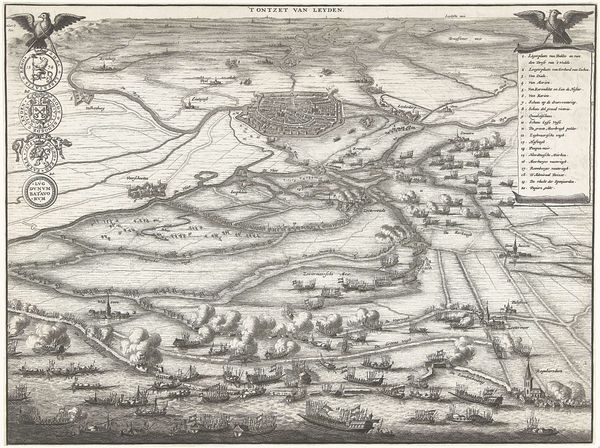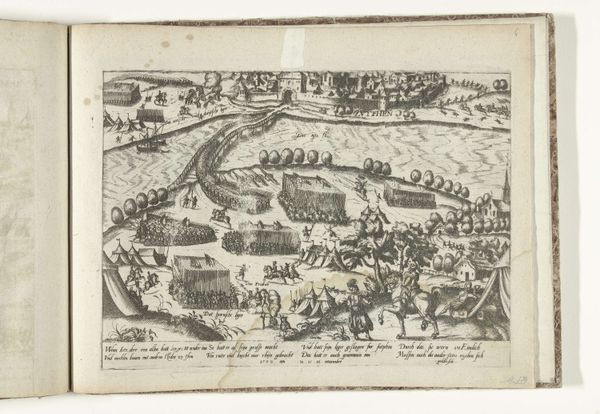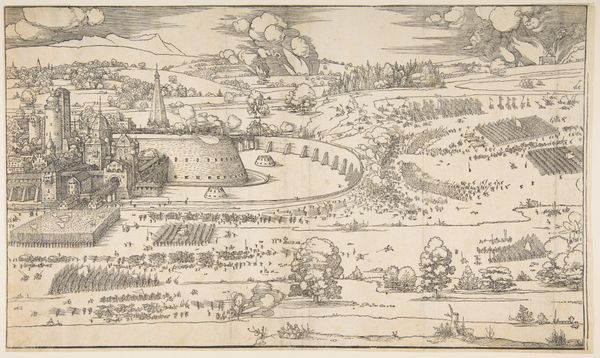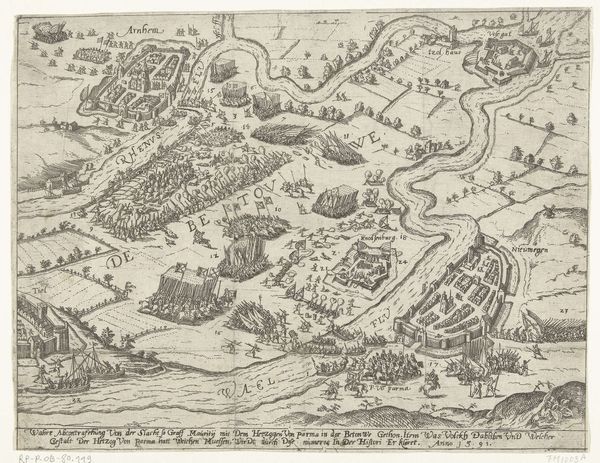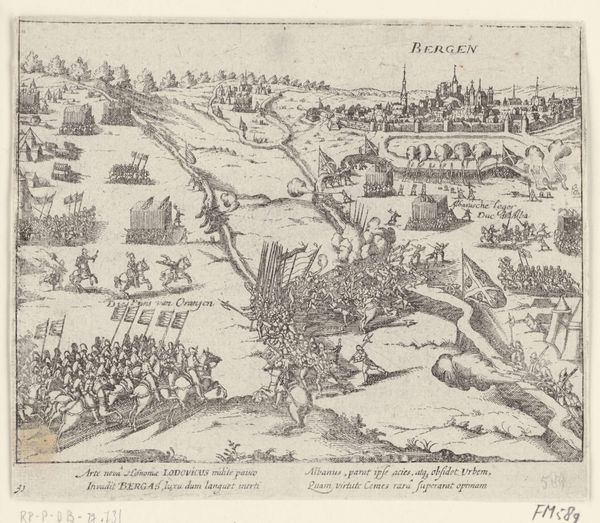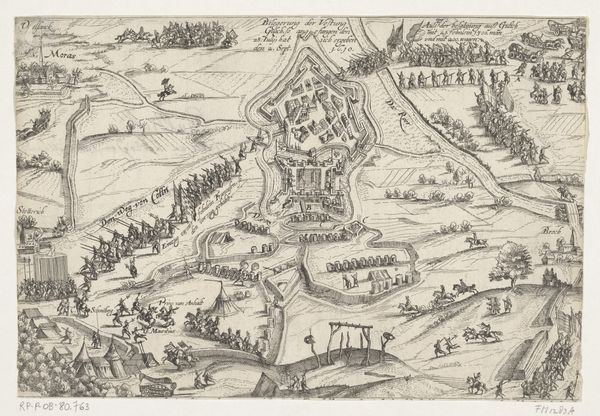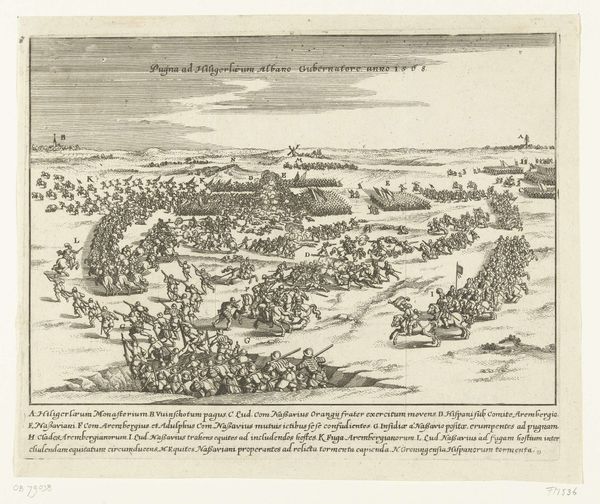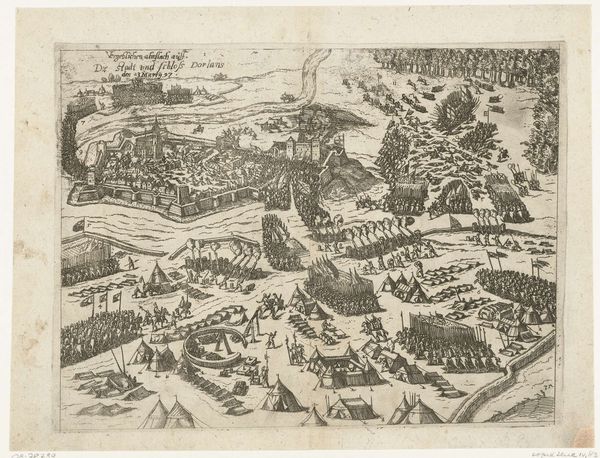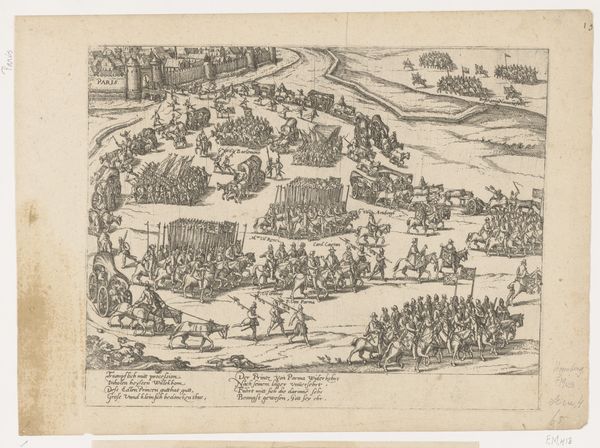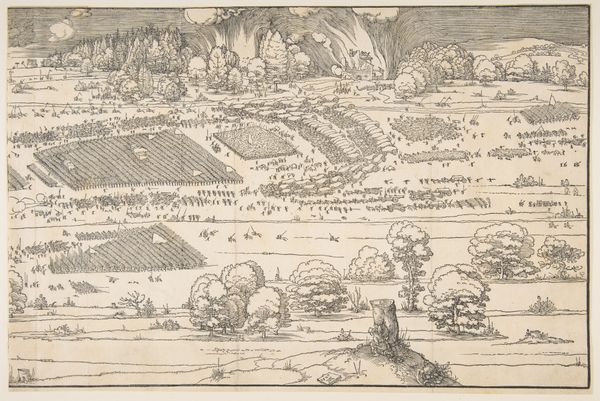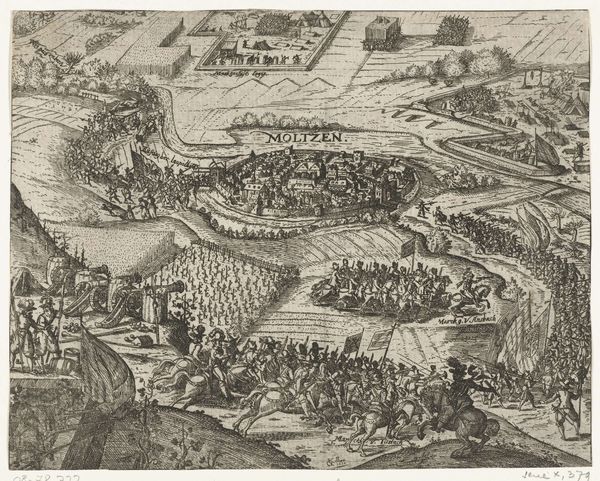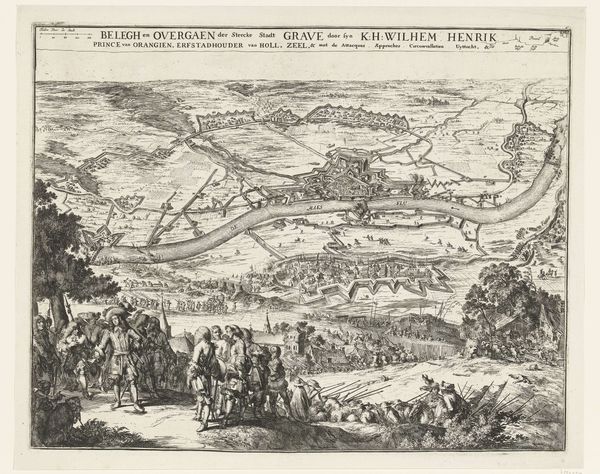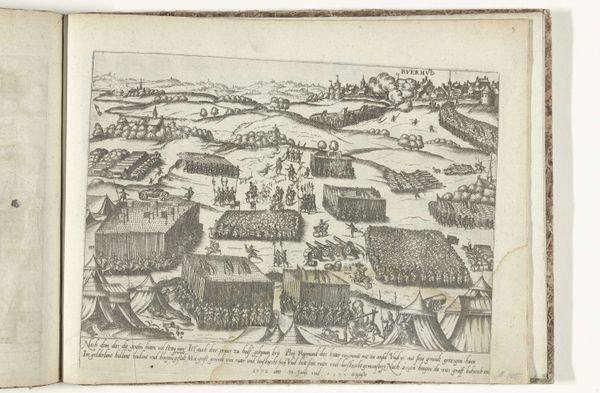
print, engraving
#
baroque
# print
#
landscape
#
cityscape
#
engraving
Dimensions: height 267 mm, width 357 mm
Copyright: Rijks Museum: Open Domain
Curator: Coenraet Decker's engraving, "Beleg van Alkmaar, 1573," made between 1701 and 1703, depicts the siege of Alkmaar during the Eighty Years' War. It’s quite a sight. Editor: It certainly is—detailed and tense! All that hatching creates a sense of controlled chaos, you know? Like the calm before, during, and after a storm all captured at once. The sheer density of it speaks to the material costs involved, right? Labor, copper, ink, time... Curator: Exactly! And consider the layered approach – the overall city layout nestled within the vast landscape, leading to the dramatic siege scenes taking place right in front of us. What about that bird's-eye perspective? Gives a very, what, strategic, objective feel, doesn't it? As if one is a general surveying the field… Editor: True. The objective feel is undeniable. And you have to appreciate the deliberate layering of labor evident. Engraving like this demands so many skilled hands. From the initial design to cutting the plate to, of course, the printing itself, the chain of production is tangible even now, centuries later. Makes you think about art less as an individual triumph, more as a collective endeavor shaped by economic and historical forces, no? Curator: Oh, absolutely, the historical element cannot be divorced. Thinking about its context as baroque also adds an interesting dimension! You see it capturing the specific moment of Alkmaar's defense—a proud moment when the city flooded the surrounding land to repel the Spanish. See how water literally becomes a material of liberation. Editor: Precisely. We get this detailed, meticulously crafted artifact precisely *because* of very specific socio-political factors. Alkmaar literally made land and water an instrument of defence! This isn't some abstract idealized landscape but, in material terms, an expression of early capitalist power, and localized resistance at once. That alone renders this work rather fascinating. Curator: Well, looking at Decker's engraving now, I think I’ve gained a fresh perspective, actually – a renewed appreciation for not just the artistic vision, but all the many stories etched into its very creation. Editor: Indeed, It highlights how intimately interwoven history, labor, and material actually are in forming not just art, but also identity and acts of freedom.
Comments
No comments
Be the first to comment and join the conversation on the ultimate creative platform.
